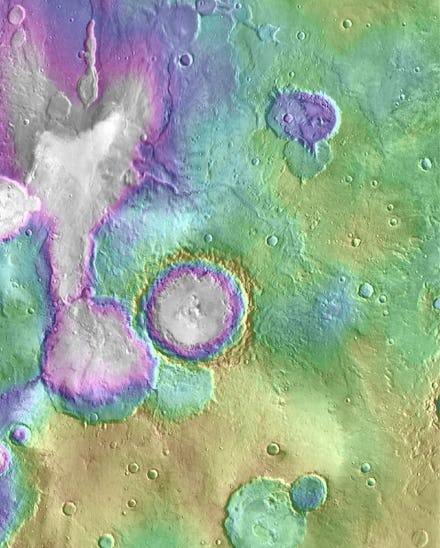Mars may have been habitable much more recently than we thought

The possibility of life on Mars just got a lot more interesting.
New research suggests that streams and lakes on the red planet actually appeared about a billion years later than we originally thought. That means that not very long ago, Mars had the right conditions for microbial life. Martian creatures could have been crawling around the planet much more recently than we ever thought possible.
Researchers figured this out by studying dried streams and lake beds on Mars. They dated the streams and lakes by comparing them to surrounding impact craters on the surface. They concluded the streams and lakes formed between two billion and three billion years ago. If the researchers are right, that means Mars was wet long after scientists thought the planet had already lost most of its atmosphere and all the surface water had frozen.
The researchers think runoff water created the streams on the planet and collected in massive lakes.
"A key goal for Mars exploration is to understand when and where liquid water was present in sufficient volume to alter the Martian surface and perhaps provide habitable environments," Mars Reconnaissance Orbiter scientist Rich Zurek said in a statement. "This paper presents evidence for episodes of water modifying the surface on early Mars for possibly several hundred million years later than previously thought, with some implication that the water was emplaced by snow, not rain."
There's still a big mystery to solve. The scientists aren't sure how Mars became warm enough during this period for liquid water to exist on the surface. It's possible that the planet's axis may have tilted, tipping its polar ice caps closer to the sun and causing them to melt, according to NASA.